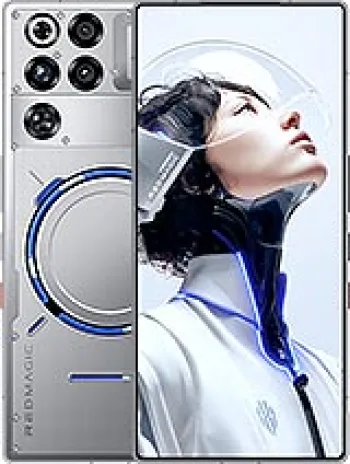
Overview of ZTE PF200
The ZTE PF200 was introduced to the market in early 2012 and released in the fourth quarter of the same year. It was an ambitious attempt by ZTE to establish a strong presence within the mid-range smartphone market by offering a robust feature set and competitive specifications. Although it has been discontinued, the ZTE PF200 remains notable due to its unique offering at the time of release. Below, we delve into its specifications, strengths, and the impact it made in the mobile industry.
Network and Connectivity
The ZTE PF200 supports multiple network technologies including GSM, HSPA, and LTE, providing users with versatile connectivity options. It supports 2G bands (GSM 850/900/1800/1900), 3G bands (HSDPA 900/1900/2100), and unspecified 4G LTE bands. The speed specifications, including HSPA and LTE, were considered competitive during its time of release, allowing users to experience faster internet browsing and data download/upload capabilities.
Design and Build
The ZTE PF200's design was typical of smartphones from its era, equipped with a mini-SIM slot. While there are no specific details about its dimensions and weight, the device was designed to be compact and user-friendly. The use of an IPS LCD screen provided vibrant color and clarity, enhancing the user experience when interacting with the phone.
Display Characteristics
Featuring a 4.3-inch IPS LCD display, the ZTE PF200 offered a resolution of 540 x 960 pixels, with a 16:9 aspect ratio. This resulted in a pixel density of approximately 256 pixels per inch (ppi), ensuring that images and text were displayed crisply. The screen size and resolution made it suitable for watching videos, browsing, and gaming with satisfactory clarity and detail.
Software and Performance
The device ran on Android 4.0 (Ice Cream Sandwich), an operating system known for its user-friendly interface and multitasking capabilities. The dual-core 1.2 GHz processor ensured that users experienced smooth performance in daily operations. While it might not compare to modern processors, it was a competent performer for applications and tasks prevalent during its release time.
Memory and Storage
One of the notable limitations of the ZTE PF200 was the lack of expandable storage, as it did not include a card slot. This could have been a constraint for users who wanted to store large amounts of data or apps. While other storage configurations exist, the absence of expandable storage options required users to rely on internal memory alone.
Camera Capabilities
The ZTE PF200 was equipped with an 8 MP main camera, complete with autofocus and an LED flash, enabling users to capture decent-quality photos. The inclusion of LED flash improved low-light photography. The device also supported video recording capabilities. Additionally, the ZTE PF200 featured a 2 MP front-facing camera suitable for video calls and simple selfies, though not as advanced compared to today's standards.
Audio and Multimedia
Audio features included a loudspeaker and a 3.5mm audio jack, adhering to standards consumers expected for personalized music and media consumption. These features allowed for flexibility in audio connectivity and ensured that users could enjoy their media without requiring adapters or additional accessories.
Connectivity Options
The ZTE PF200 supported Wi-Fi 802.11 b/g, DLNA, and hotspot capabilities for wireless internet connectivity. Bluetooth 2.1 with A2DP was included for data transfer and peripherals connection. GPS with A-GPS supported navigation needs, while NFC allowed for contactless data exchange, a distinctive feature for its time. MicroUSB 2.0 (MHL TV-out) enabled data transfer and connectivity with other devices, including direct TV output.
Sensors and Additional Features
The inclusion of an accelerometer, proximity sensor, and compass enriched the usability of the device. These sensors facilitated various applications, from gaming to navigation. Although these sensors are standard today, their effectiveness showcased ZTE PF200's adequacy in meeting consumer expectations at that time.
Battery Life
The smartphone was powered by a removable Li-Ion battery, a common feature in devices from its era, which allowed users to replace the battery when its performance declined. This option extended the device's usability spanning several battery cycles.
Conclusion
In summary, the ZTE PF200 was a compelling entry in the mid-range smartphone market when it was released. Even as technology continued to advance rapidly, the ZTE PF200 provided an insightful glimpse into the evolution of mobile devices. Presenting a reasonable mix of features and performance capabilities, it was a favorable choice for consumers seeking reliable performance without premium price tags during its active period in the market.
ZTE PF200 Key Features
- Supports multiple network technologies: GSM, HSPA, and LTE
- Equipped with a 4.3 inch IPS LCD display offering a resolution of 540 x 960 pixels
- Powers on Android 4.0 (Ice Cream Sandwich) with a Dual-core 1.2 GHz processor
- Includes an 8 MP rear camera with autofocus and LED flash
- Features a 2 MP front-facing camera for selfies
- Supports Wi-Fi, Bluetooth 2.1, GPS, and NFC connectivity
- Offers microUSB 2.0 with MHL TV-out for connectivity and entertainment
- Contains key sensors: Accelerometer, proximity, and compass
- Comes with a removable Li-Ion battery for ease of replacement
ZTE PF200 Main Disadvantages
- Discontinued: The device is no longer available in the market.
- Lack of Expandable Storage: No card slot for memory expansion.
- Older Android Version: Runs on Android 4.0 (Ice Cream Sandwich), which is outdated.
- Unspecified Dimensions and Weight: Physical dimensions and weight of the device are not provided.
- Basic Selfie Camera: Only 2 MP front camera, which is quite low by current standards.
- Older Bluetooth Version: Bluetooth 2.1, which lacks the improvements found in newer versions.
- Limited Color Options: Available only in Brown.

View Also
More Phones
All Rights Reserved +14267 Phones © Mobilawy 2025

























